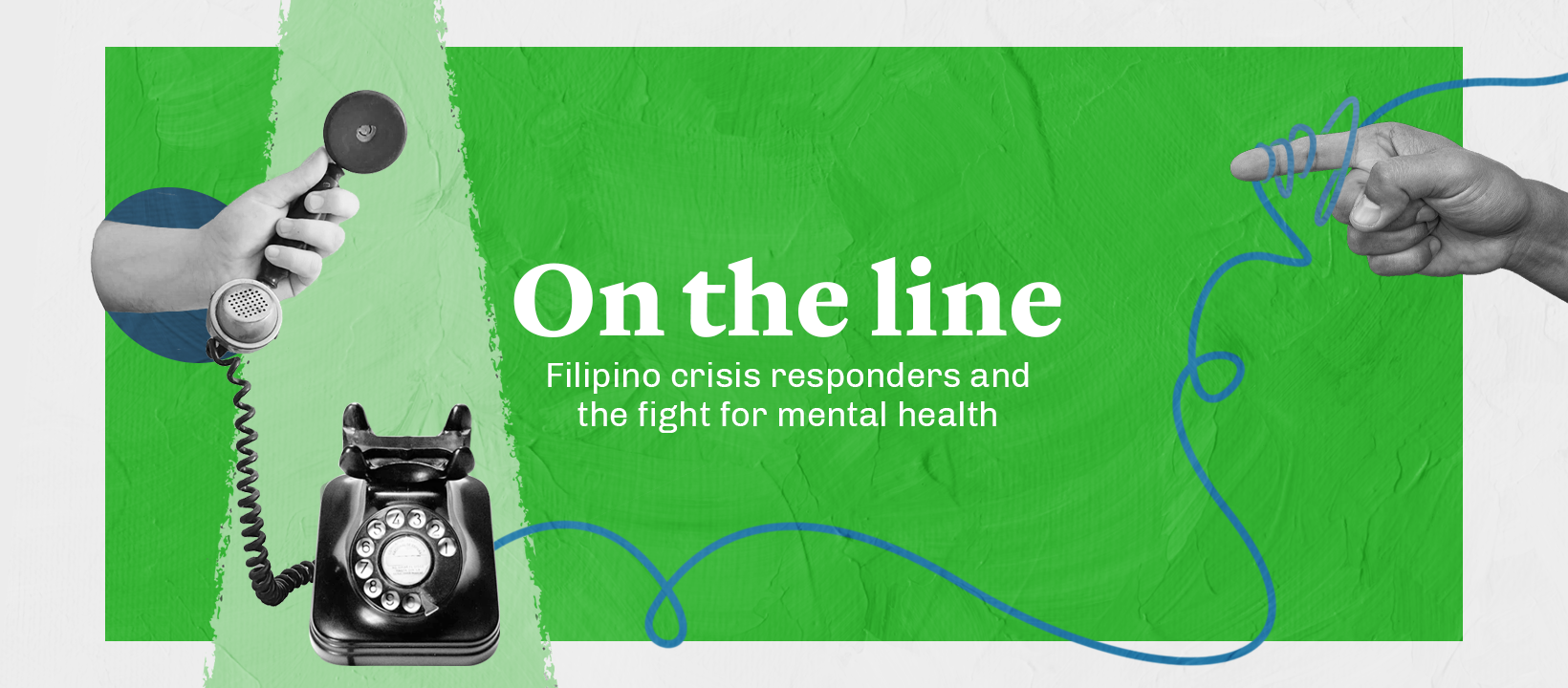Trigger warning: This article contains mentions of suicide, self-harm, and other mental health conditions.
A girl haunted by her own thoughts contemplates taking her own life. A boy grappling with self-harm sinks deeper into despair. We may not want to admit it, but we know of these stories. Unfortunately, some of us just choose to ignore these narratives.
Though imagine if the boy or girl found someone to talk to—a listener, a kind soul, a counselor—anybody. Both may still retreat in fear of being judged, of being shunned by a society that often refuses to believe that mental health is a real concern. This is how the familiar cycle of self-doubt repeats itself.
When it comes to mental health, it’s evident that the Philippines still deals with a deeply rooted stigma against related conditions. One in every five Filipino adults suffers from mental health disorders. Though Republic Act 11036, or the Mental Health Bill, was signed last June 2018, mental health facilities and institutions are still scarce—making it difficult to access the needed interventions.
But there are still lives to be saved. Moving past the stigma, some Filipinos go out of their way to support those at their lowest: Crisis hotlines like that of In Touch Community Services provide emergency counseling to individuals who struggle with their mental health. Vantage takes a look into the lives of these unsung heroes—the crisis responders who are always just a phone call away.
The other end of the line
In Touch seeks to change the local mental health care landscape by offering their callers words of comfort in times of distress. Established in 1980, the self-funded non-profit not only provides in-person counseling, but also a 24/7 crisis hotline.
In Touch also relies heavily on volunteers—anyone who undergoes the training can become a crisis responder. Many have since gained a lasting purpose in this line of work.
Joseph Yap is one of many In Touch members who have dedicated themselves to this fight for mental health. Despite having graduated just last May, he knew from the beginning that he wanted to influence perspectives on mental health. “I’ve seen how destructive [poor mental health] can be, and how it can change people’s lives,” he explains. “And I’ve struggled with the same issues as well.”
“I observed that in my own family, people would rather not talk about feelings,” Yap adds. It’s only fitting that today, his line of work involves helping others process their emotions.
On the other hand, some responders find themselves on the job by chance. “I didn’t really plan on becoming a responder. It just happened,” Crisis Line Coordinator Mark Romero admits. Now set on saving people’s lives, Romero reflects on how he discovered In Touch after years in the academe and corporate world.
“That’s the time I actually just googled hope counseling,” he recalls. “And then it appeared: In Touch. That was a year ago…and here I am [now].”
But before getting to work, would-be crisis responders must power through an intensive training process, given the sensitivity required of the job. Yap shares that a huge chunk of training comes not just from long lectures, but also roleplays and simulated calls. And even then, one can never feel fully prepared.
Calling struggles to mind
“They say you’re never really a responder until you get that suicide call,” Yap shares. “That’s…like a test.”
“My first ever suicide caller was a college student,” he continues. “She was 19 years old, [and] I’m just 21. So, we’re so close [in age], and she was struggling with self-harm.”
In vivid detail, Yap recounts the girl’s words—the lack of support she felt in her own household and the refusal of those around her to acknowledge her struggle. “She found herself in a very psychologically invalidating environment,” he says.
Yap did his best to reassure the caller, though he admits that he never felt like his efforts were “enough.” Though he constantly struggles with the weight of being a responder, he believes it all becomes worth it when he hears from callers again. Part of In Touch’s protocol is to have another responder reach out for a wellness check the next day, and Yap was overjoyed to learn that the girl was doing better.
“The thing about that call was, I loved the follow through [so much],” he says. “To [hear her] say that she was grateful for the call, that if I didn’t pick up that call, you know, that she wouldn’t know what she would have done.”
But aside from these follow-up calls, there aren’t really numbers to back up a responder’s performance. And so, crisis responders often grapple with self-doubt and criticism—they are left to wonder whether their words do anything for whoever’s on the line.
“I often run into thoughts like, ‘Did I help that person enough? Did I compliment them enough? Did I affirm them? Did I make a small step?’” Yap shares. “When your work is measured in that, the level of interaction and progress, there’s just a lot of opportunity for self-criticism and to just beat yourself up.”
To manage this mental and emotional toll, In Touch provides an in-house support system and counseling services for its responders. There is also a culture of constantly checking in and sharing advice with each other on the call floor. Volunteers are trained to be more self-aware about their own state, debriefed on sensitive calls, and given breaks to recharge. Responders need time to rest so they can respond better to calls and maintain their mental well-being for the job.
Despite these efforts, the crisis line struggles with raising awareness and manpower. Monthly call intakes are estimated to be at 700 to 1,300 calls, with responders facing an average of one caller per hour. However, this is just a small scale of the people who struggle with mental well-being in the Philippines. The DOH reports that 3.3 million Filipinos suffer from depressive disorders for 2.5 males and 1.7 females in every 100,000 people. In Touch thus hopes that more people reach out not only to ask for help, but also to offer their services as volunteers.
A step towards well-being
It doesn’t take a responder to make a difference for people in distress: Anyone can help by being a friend with human compassion—it’s not necessary to have all the answers. A tip from Crisis Line Manager Jake Flores is to “not be so enamored with the idea of giving advice.”
“Don’t feel the pressure that ‘I have to give advice, to say advice.’ You don’t have to,” he adds. “You just have to be there to listen to them.”
In support, Yap says to tap into our compassion for whoever needs to be heard. “You can be that [comforting voice] to your parents, you can be that to your siblings, your friends—anyone. Because some people are just waiting for that, for someone to ask them, ‘Oh, how are you doing?’” he explains. “That makes a huge difference, to just reach out to someone.”
Romero’s account of what makes a good call shows how the impact of listening manifests in the simplest of ways. “The [nicest] thing you could hear from them is when they’re already laughing,” he says.
“In the beginning, they’re really distressed and then at the end you just hear them laugh already or plan for the next days,” Romero continues. “You just have to be there and listen to them, and then you just realize at the end, [as] you hear their voice change, that there’s more hope in their voice.”
It’s comforting to know that there are passionate and sincere people who are ready to lend an ear to those who find themselves in the dark. At the end of the day, the establishment of crisis lines is a great first step. Yet, there remains much to be done—for all of us—to hear others out and call for better support towards mental well-being in the country.
With reports from Justin Ginete
Editor’s Note: The In Touch Crisis Line may be reached through +63 917 800 1123 (Globe), +63 922 893 8944 (Sun), or 893 7603 (landline), 24 hours and seven days a week. The non-profit is also open to interested volunteers.
Graphic by Romeo Descalso III






